This is the 25th post in a series of Nikon D850 tests. The series starts here.
I did a test of the effect of vibration on image sharpness in the D850 with an 85 mm lens here. There were a few mild surprises, but nothing earth-shaking. I wanted to try the Nikon 200 mm f/2 VR I in a similar test, to see what happened when the shake magnification by the lens increased, and also to see what happened if the direction of shutter and mirror motion were side-to-side, where a tripod is not as stiff. The rotating collar on the 200/2 makes that easy.
As before, I used these shutter modes:
- Normal operation, with flapping mirror and mechanical shutter
- Mirror up operation with electronic first-curtain shutter (EFCS)
- Live view operation with EFCS
- Live view operation with electronic shutter
Here’s the target in portrait mode:
In this case, I used the vertical edge, which should see the greatest effects of vibration. In the case of the landscape mode shots, I used the horizontal edge, which should also suffer the most.
I set the lens to its sharpest on-axis aperture, f/4. I focused using live view, peaking, and maximum magnification. I used a Nikon intervalometer to make 32 exposure with each shutter mode.
Here’s the rest of the particulars:
- Vinyl tile on 8″ concrete on grade floor
- Gitzo Systematic 4 legs
- Arca Swiss C1 head
- 1/100 second exposure duration
- ISO 64
Here’s what I got in landscape orientation:
The vertical axis is the MTF50 measured in cycles per picture height, a standard measure of sharpness. Higher is better. I’ve plotted the worst, average (aka mean), and best results, and also the mean plus and minus the standard deviation (aka sigma). As expected, the normal mode of operation, with the mirror flipping up when the shutter release is depressed, is the worst. The green line is the best sharpness found in the test in an earlier post for that lens and target. That protocol used a combination of manual focusing and the D850’s Focus Shift Shooting feature (which uses the electronic shutter) to find the plane of sharpest on-axis focus.
Note that the trailing curtain of the EFCS mode degrades the sharpness more than the fully electronic shutter.
The other two raw channels:
They are similar.
In portrait orientation, the flapping mirror makes things so much worse that I had to change the vertical scale:
In portrait orientation, there is one thing that is different in the relationship between the four modes. LV EFCS is not as good as Mup EFCS. I’m not sure what that’s about.
If you want a feel for what the portrait mode numbers mean visually, here are tight crops of the zone plate in the middle of the target, enlarged to a bit less than 200%:

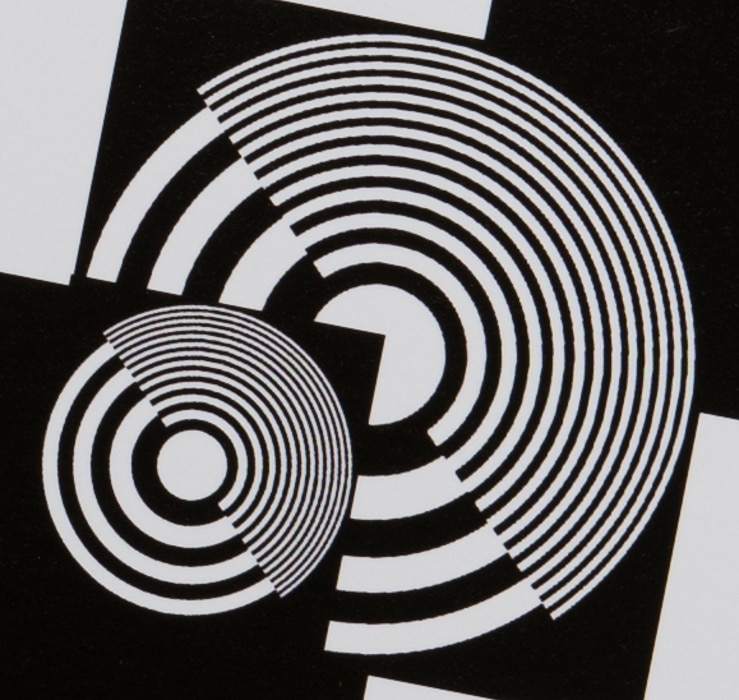
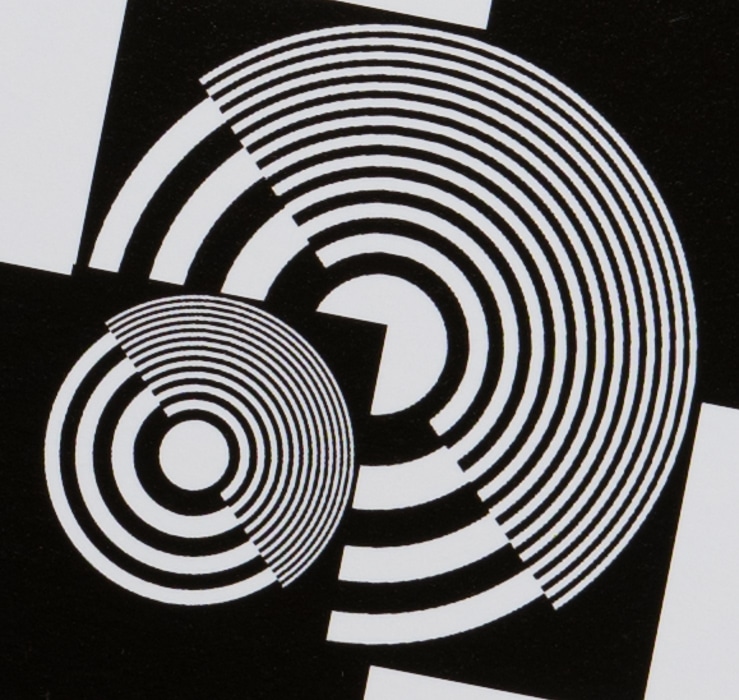
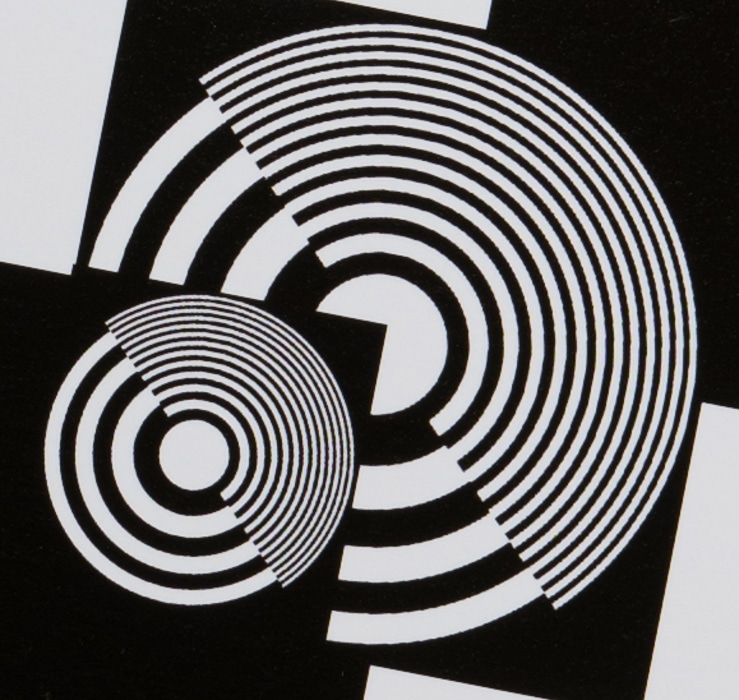
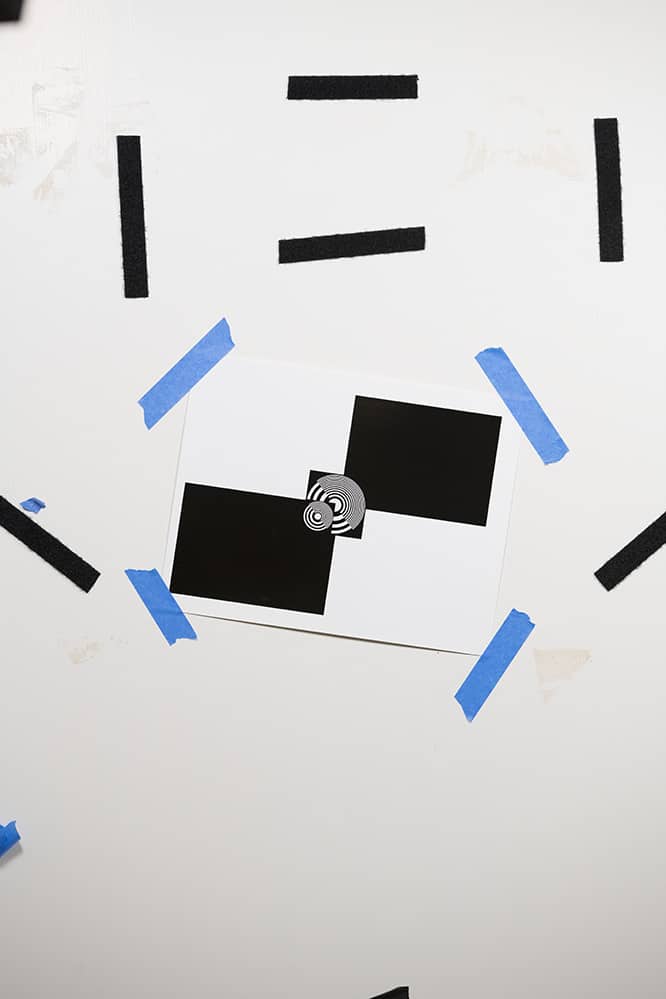
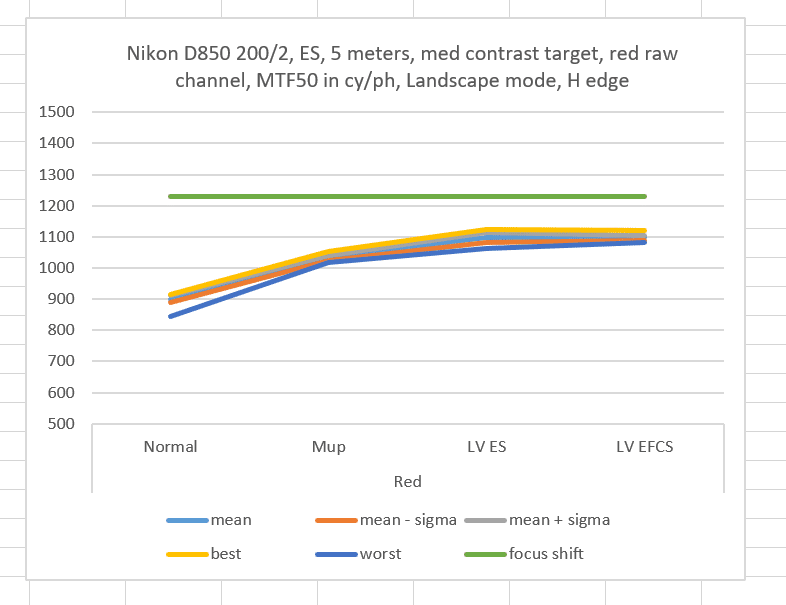
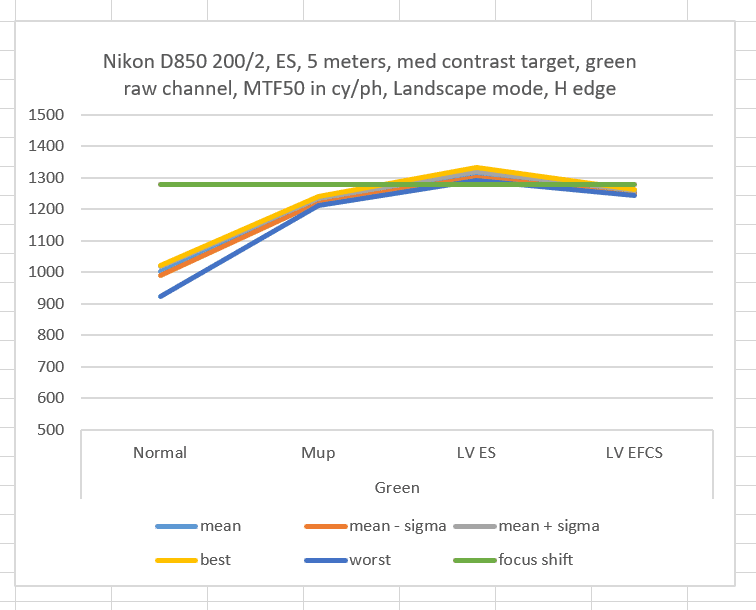
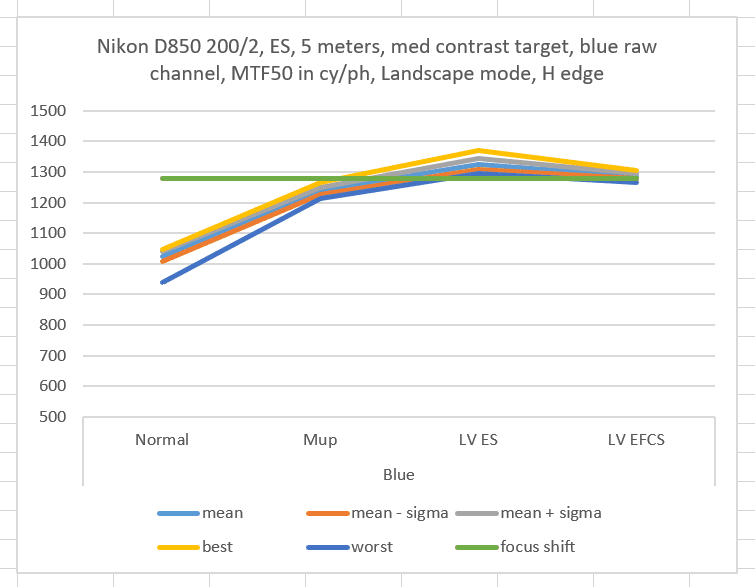
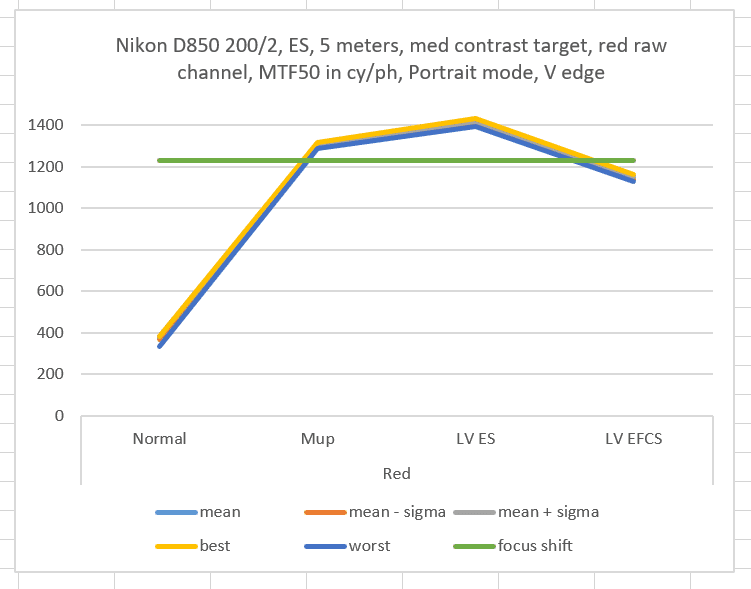
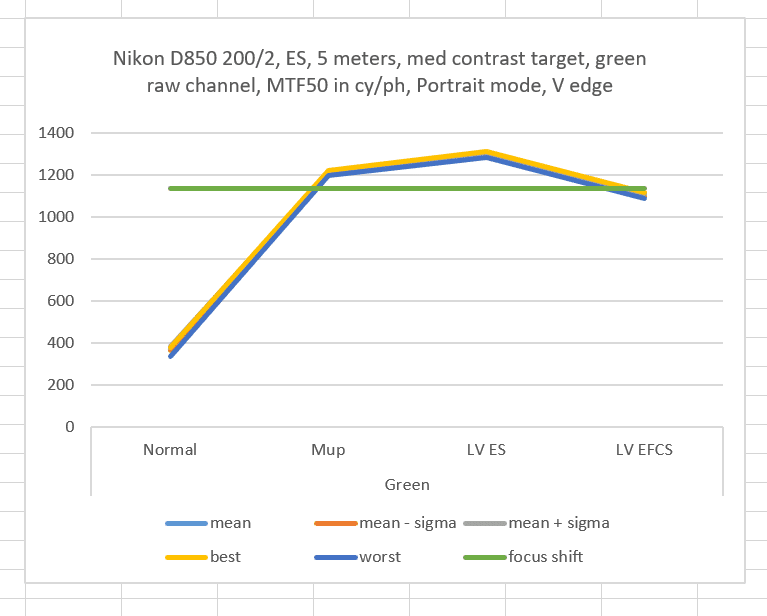
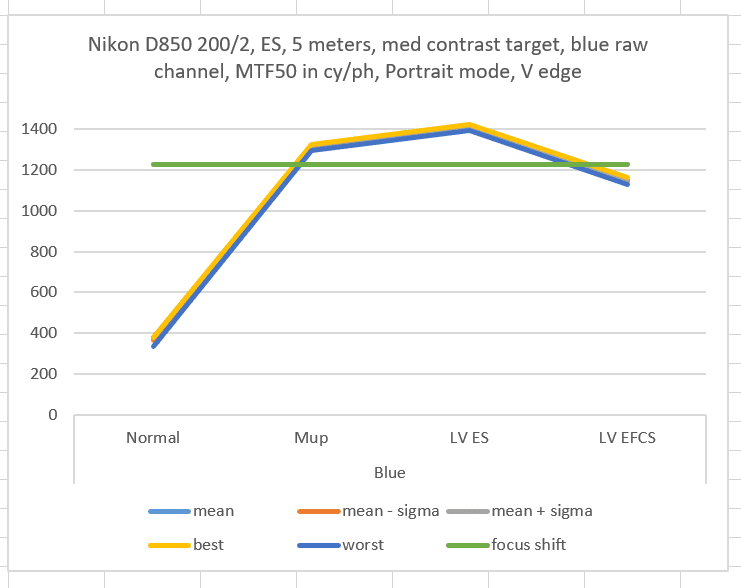
Very off topic and not for publishing really but for your gfx series I just noticed this
The contax zeiss 85 1.2 works very well on the gfx
http://www.stevehuffphoto.com/2015/03/06/the-contax-85-1-2-60-year-anniversary-lens-by-mark-wu/
Ah, what the hey; someone else might find this interesting. Thanks!
Regarding this series of D850 tests: this Canon 6d semi-defector to the Sony a7Rii would appreciate summary comment[s] about the tested characteristic such as how the D850 compares to the D810 and/or a7Rii and/or [fill-in-the-blank]. Better? Worse? About the same?
I don’t know the D850 well enough yet to be definitive, but I will cover that when I get to the summary. At this point I can say that the D850 is a big improvement over the D810, which was a big improvement over the D800, which was an excellent camera.
“At this point I can say that the D850 is a big improvement over the D810, which was a big improvement over the D800, which was an excellent camera.”
Jim, I’m very disappointed in that statement, how “big”, how was “big” measured, Gitzo Systematic or Studio Stand , razor slant edge or inkjet printed target, we need the mean at least and =/+ sigma , is the “big” the same exact unit of measure between the three cameras, surely your not going to lapse into subjectivity ?
Seriously thank you for the continuing work, even if not actively commenting it is rest assured greatly appreciated anfd I hope your health continues to hold up and indeed improve.
since you have used both D850 and GFX, how do you compare them in terms of RAW output and working with the files. Is there a big difference switching to GFX instead of D850?
Thank you,
John
They are both great cameras. I think the biggest differences are the EVF vs OVF, the user interface and the native line of AF lenses. The Fuji lenses are as a (small) group are definitely a cut above the Nikkors. There are focusing issues with both cameras. I expect the GFX will have a 100 MP sibling fairly soon. I’m thinking that it will be longer before the D8xx gets there.
The first version of the VR 200/2 has a vibration-prone tripod mount; Mk II is much better (the lens doesn’t stay ringing after nudged, the vibration dies quickly). Also the wide open contrast is improved.
The reason this is important is because EFCS/ES/LV won’t help subdue vibrations due to wind in the field but a lens with a good tripod mount (combined with a good tripod and head (which you are already using)) will help keep the effects of wind to a minimum as well as reduce the effects of shutter and mirror induced vibrations.
Hi Jim,
Thank you for those excellent tests. t
The vertical test you did is exactly what I found (D810) on one of my best pictures – In vertical at the left side the trees suddenly had twice as many branches. The bukey changed to be unpleasant. Perhaps it was a flimsy light tripod with VR on and mirror up at 1/640 sec exposure time. VR off was actually worse for the 70-200/2.8 VRII. That’s all I can say. Still this picture looks great in 20 x 60 in as a prospective.